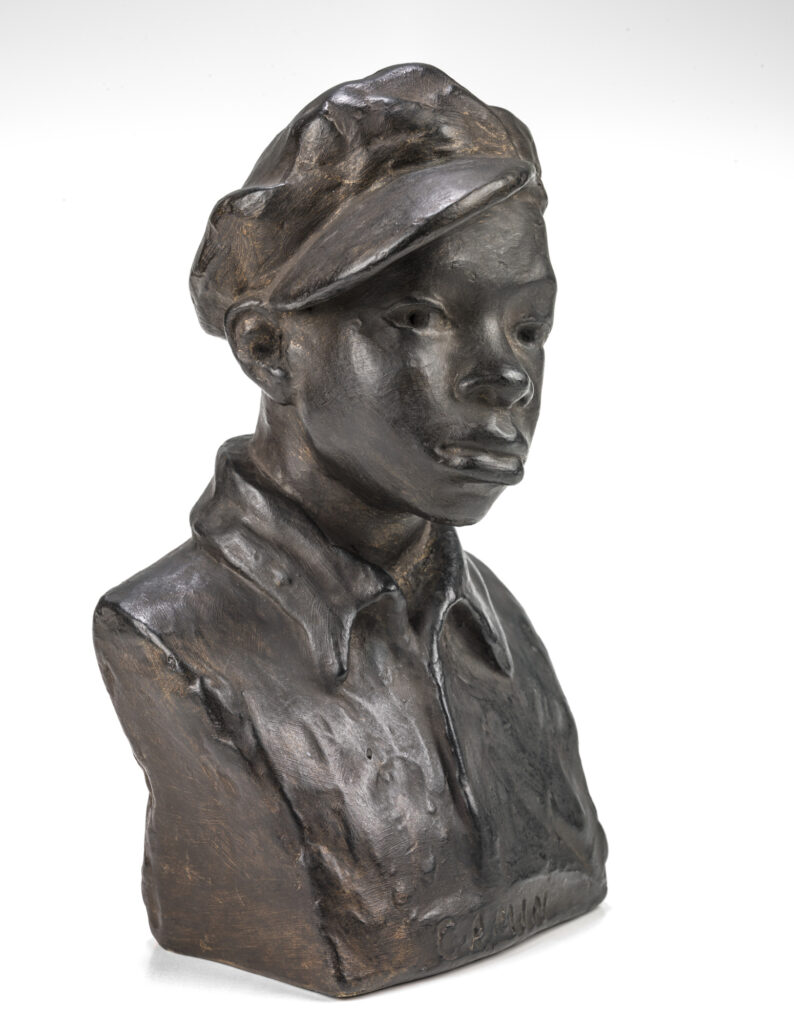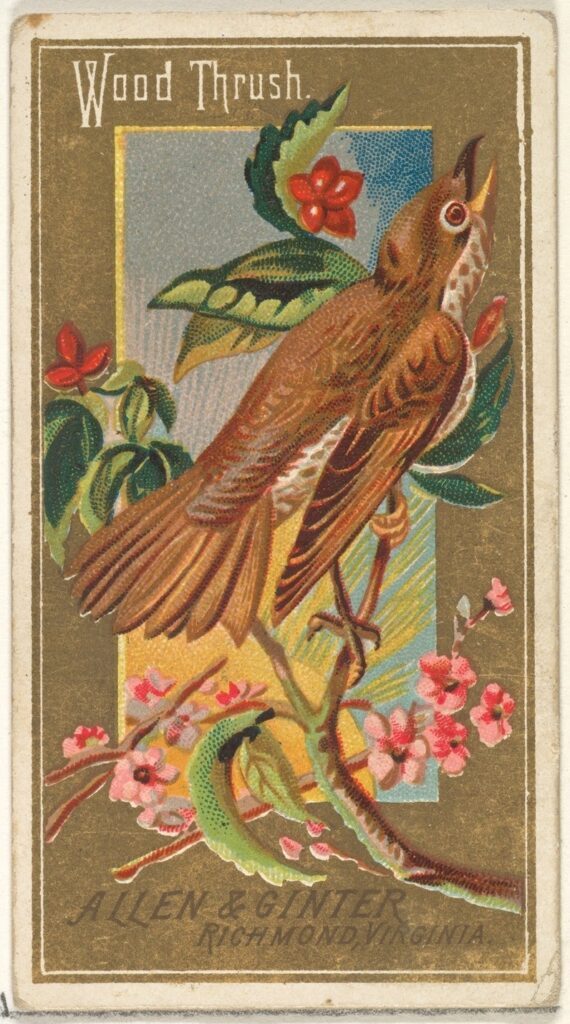The Bronze Legacy (To A Brown Boy)
By Effie Lee Newsome
Annotations by Rene Marzuk

‘Tis a noble gift to be brown, all brown,
Like the strongest things that make
up this earth,
Like the mountains grave and grand,
Even like the very land,
Even like the trunks of trees—
Even oaks, to be like these!
God builds His strength in bronze.
To be brown like thrush and lark![1][2]
Like the subtle wren so dark!
Nay, the king of beasts wears brown;[3]
Eagles are of this same hue.
I thank God, then, I am brown.
Brown has mighty things to do.
NEWSOME, EFFIE LEE. “THE BRONZE LEGACY (TO A BROWN BOY).” THE CRISIS 24, NO. 6 (OCTOBER 1922): 265.

[1] The thrushes are a large passerine bird family, also known as perching birds or songbirds. Although some of the thrushes that occur in North America are brown, like the wood thrush pictured above, they vary in color and include species like the American robin and the eastern bluebird!
[2] The larks are a large family of songbirds whose species occur mainly in Africa. According to the OED, however, the name, when used without specification, usually refers to the Eurasian skylark, a brown songbird celebrated by poets and naturalists alike. The horned lark is the only lark that is native to North America. During the early twentieth-century, English settlers tried to introduce the Eurasian skylark to the region with little success, although a small population of these famous songbirds persists in southern Vancouver Island.
[3] The king of beasts, i.e., the lion.
Contexts
Starting in 1912, the October issues of The Crisis, the official magazine of the NAACP, were dedicated to children. A typical edition of these children’s numbers would contain a special editorial piece and two or three literary works specifically for children, while still including the serious pieces about contemporary issues with a focus on race that The Crisis was known for. These October numbers were sprinkled with children’s photographs sent in by the readers.
In his first editorial for the Children’s number in 1912, W. E. B. Du Bois wrote that “there is a sense in which all numbers and all words of a magazine of ideas myst point to the child—to that vast immortality and wide sweep and infinite possibility which the child represents.”
The success of The Crisis’ children’s number led to the standalone The Brownies’ Book, a monthly magazine for African American children that circulated from January 1920 to December 1921 under the editorship of Du Bois, Augustus Granville Dill, and Jessie Fauset.
Definitions from Oxford English Dictionary:
- thrush: A name of two British and general European birds.
Resources for Further Study
- In October 1922, W. E. B. Du Bois sent a typed copy of “The Bronze Legacy (To a Brown Boy),” to Margaret S. Thompson, a subscriber to The Crisis who had apparently inquired about the poem. Both the printed copy and Du Bois’s accompanying letter at available online, courtesy of the University of Massachusetts Amherst Libraries’ Special Collections and University Archives.
- Dr. Rudine Sims Bishop, champion of multicultural children’s literature, makes a case for reading Effie Lee Newsome today.
Contemporary Connections
In her book Racial Innocence: Performing American Childhood from Slavery to Civil Rights, Robin Bernstein illustrates how the American idea of childhood innocence became racialized and excluded black children. A poem like Newsome’s “The Bronze Legacy” pushes in the opposite direction while encouraging racial pride.